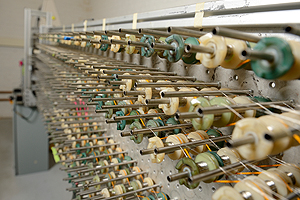
Geese, Be Gone!
If you see a robot patrolling the Johns Hopkins University Applied Physics Laboratory campus, looking for wild geese and scaring them off, you’ll know that Bijan Varjavand has succeeded.

If you see a robot patrolling the Johns Hopkins University Applied Physics Laboratory campus, looking for wild geese and scaring them off, you’ll know that Bijan Varjavand has succeeded.

For decades, preservationists have helped protect historic documents, such as centuries-old maps, by placing them in clear envelopes. Enclosing them in these clear envelopes provides mechanical support to help keep these old, brittle treasures from crumbling while also allowing the public to see and sometimes handle them. But paper degradation isn’t a self-contained event, says Patricia McGuiggan.

Having sensitive, lightweight, and portable gas-sensing systems could be helpful for a variety of different users: people with asthma searching for their triggers, soldiers at risk of chemical attack, or industrial workers facing toxic gas exposures.

In late 2017, the Whiting School lost two founding chairs: Robert E. Green Jr. and Gerald M. Masson.

Professors Sharon Gerecht and Hai-Quan Mao have assumed leadership of Johns Hopkins University’s Institute for NanoBioTechnology, succeeding Peter Searson and Denis Wirtz.

Sometimes, materials just don’t behave the way you need them to. So Timothy P. Weihs and his collaborators have gotten creative. By weaving metal threads into intricate patterns, he can make webby 3-D materials with unique properties.

When materials scientists want to create steel with specific properties—say, a certain combination of strength, hardness, and fracture resistance—they know how to approach the problem. Materials scientists know much less about how to predict and alter the mechanical properties of metallic glasses and other amorphous solids.

Johns Hopkins engineers are developing high-tech hardhats, collaborating for improved CT scanners, and working towards better tissue repair.

“It was painful to me, as an engineer, to see how badly we had failed society.” 2/16/16, Baltimore Sun Judy Mitrani-Reiser, civil engineering…